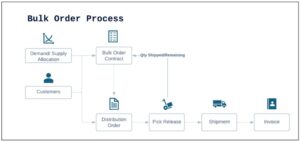Expanding Retail Locations 4x in 12 Months Enabled by Improved Visibility and a Boomi to NetSuite Integration
Scaling rapidly within 12 months, a retailer’s digital transformation enabled a fourfold increase in locations—and better visibility into performance—by integrating systems and connecting warehouse and trading partners for improved insights across products, inventory, orders, and shipments.

Challenges
To support a lifestyle retailer’s ambitious plans for hyper-growth in both its brick-and-mortar and online presence, critical challenges arose from disconnected and fragmented systems. These systems lacked inventory visibility across sales channels and failed to integrate with warehouse and vendor operations for seamless order management, tracking, and shipping. Furthermore, limited capabilities for managing returns across platforms led to significant operational inefficiencies, hindering scalability and growth potential.
How we helped
The retailer engaged Riveron’s NetSuite experts to create a connected ecosystem by designing integration flows between various systems and platforms, using Boomi as the middleware. This unified approach enabled seamless data synchronization across eCommerce, point-of-sale (POS), warehouse, and trading partner systems, optimizing operations at every level.
The solution supported multi-dimensional product data keys, such as size and color, between the ERP and eCommerce platforms. Real-time API-based POS integration enabled efficient flows for in-store inventory replenishment, Buy Online Pickup In-Store (BOPIS), endless aisle orders, and return transactions. Integrating POS with the ERP also streamlined shipments, delivery, ASNs, ATP, and inter-location stock movements, ensuring alignment across operations.
To manage the growing volume of returns, integrating the existing return management system allowed centralized tracking of returned items. This included updates for both mail returns and in-person kiosk data, improving margin tracking and the accuracy of cost of goods sold calculations.
For large retailer EDI orders, the integration connected customers, NetSuite, and the warehouse, enabling the exchange of product information, purchase orders (POs), ASNs, invoices, warehouse instructions, inbound goods details, and shipment confirmations. Additionally, return item data updates triggered inventory adjustments based on warehouse returns, ensuring precise stock management.
Additionally, the team developed custom extensions to enhance operational efficiency and address specific business needs:
- Item Allocation at Style Level: A custom Suitelet built with Vue.JS and the SuiteCloud Developer Framework (SDF) enabled reallocation of item commitments at the style level. This feature provides a grid-based interface for managing inventory commitments across multiple styles, streamlining allocation processes.
- Bulk Orders/Distribution Orders: A tailored technology solution was implemented to handle bulk orders and inventory commitments more effectively. This included automatic reallocation of inventory to associated distribution orders, real-time updates on shipped and remaining quantities, and a tab for viewing related distribution orders. Additionally, EDI orders were automatically matched to bulk orders based on customer and shipping windows, reducing manual effort.
- Dynamic Landing Cost and Freight Management: Landing cost estimate templates were used for static cost categories (such as Section 301 tariffs), while freight costs were dynamically updated at the time of receipt based on purchase order and item data.


Results
Through this digital transformation, the retail organizations successfully scaled operations from 8 locations to over 40 stores within just 12 months. By introducing BOPIS (Buy Online, Pick Up In-Store) and an endless aisle shopping experience, the company enhanced customer convenience and satisfaction. The transformation also improved returns and exchange services, with recorded online and kiosk returns enabling better tracking of margins and cost of goods sold. Customer orders can now be fulfilled from any of the 40 store locations nationwide, reducing manual inventory management efforts. Additionally, custom-built extensions optimized item allocation, streamlined order management, and improved freight cost accuracy, significantly boosting overall operational efficiency.

